1. Restoring Mangroves Can Turn the Tide on India’s Coastal Security – Environment
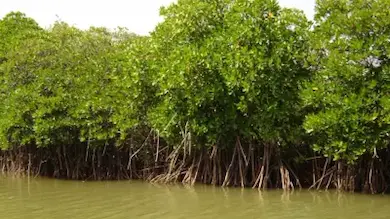
Why in News?
India’s renewed efforts to restore mangrove ecosystems are yielding positive results, underlining their crucial role in climate resilience, coastal protection, and biodiversity conservation. These efforts gain significance amid growing threats from urban expansion, aquaculture, pollution, and climate change.
What Are Mangroves?
Mangroves are salt-tolerant trees and shrubs found in intertidal zones along tropical and subtropical coastlines. They are uniquely adapted to survive in harsh coastal conditions with low oxygen levels, saline water, and strong tides.
Extent of Mangroves in India
- Total Cover: 4,992 sq km (approx. 0.15% of India’s land area)
- Largest Mangrove Cover: West Bengal (Sundarbans)
- Other major states: Gujarat, Maharashtra, Tamil Nadu, Andhra Pradesh, Odisha
Significance of Mangroves
| Function | Explanation & Example |
|---|---|
| Natural Coastal Shield | Buffer against cyclones and tsunamis (e.g., Tamil Nadu during 2004 tsunami) |
| Climate Mitigation | High capacity for carbon sequestration (blue carbon) helps meet Paris Agreement goals |
| Biodiversity Hotspot | Habitat for fish, birds, and marine organisms (e.g., Thane Creek Flamingo Sanctuary) |
| Livelihood Support | Fishing, honey collection, and crab farming sustain local communities (e.g., Sundarbans) |
| Disaster Risk Reduction | Reduces flooding and shoreline erosion (e.g., Cyclone Phailin, Odisha) |
Key Threats to Mangroves
| Threat | Impact |
|---|---|
| Urbanization | Clearing for development, especially in metros |
| Aquaculture | Shrimp farming leads to habitat loss |
| Pollution | Plastics and industrial effluents reduce mangrove health |
| Climate Change | Sea level rise and salinity shifts affect regeneration |
| Overexploitation | Excessive fuelwood and timber collection damages ecosystems |
Restoration Efforts and Success Stories
Tamil Nadu
- Community-led restoration using tidal canal digging, seed collection, and removal of invasive species.
- NGOs and local fisherfolk actively involved.
Mumbai (Maharashtra)
- Corporate Involvement: Amazon India funded a large-scale restoration initiative.
- Restoration helped enhance biodiversity in degraded patches of mangroves.
Gujarat
- Leader under MISHTI (Mangrove Initiative for Shoreline Habitats & Tangible Incomes) scheme.
- Planted 19,000 hectares of mangroves in just two years.
Government Initiatives
- MISHTI Scheme (2023): Promotes mangrove afforestation and eco-sensitive restoration.
- Green India Mission: Supports forest and ecosystem restoration.
- Coastal Regulation Zone (CRZ) Norms: Recognize mangroves as Ecologically Sensitive Areas (ESAs).
- State Action Plans on Climate Change (SAPCCs): Integrate mangrove conservation into climate strategies.
Exam Connect – Possible Questions
Prelims
- Which of the following is/are true about mangrove ecosystems in India?
- They sequester blue carbon.
- They are found only on the eastern coast of India.
- Gujarat has the largest mangrove cover in India.
- They act as buffers against natural disasters.
Choose the correct option:
A. 1 and 4 only
B. 1, 3 and 4 only
C. 1, 2 and 4 only
D. All of the above
Answer: A. 1 and 4 only
- Consider the following pairs regarding mangrove restoration initiatives in India:
| Location | Key Feature |
| Tamil Nadu | Community-led seed restoration |
| Mumbai | Amazon-funded replanting drive |
| Gujarat | MISHTI initiative |
Which of the above pairs are correctly matched?
A. 1 and 2 only
B. 2 and 3 only
C. All of the above
D. 1 and 3 only
Answer: C. All of the above
Mains
- “Mangrove ecosystems play a crucial role in enhancing coastal resilience and achieving climate goals.” In light of this statement, discuss the significance of mangrove restoration in India and the challenges it faces. (250 words)
- Community participation and public-private partnerships are key to successful ecological restoration. Evaluate this statement with reference to recent mangrove restoration efforts in India. (250 words)
2. New Guidelines for Management of Contaminated Sites (2025) – Environment
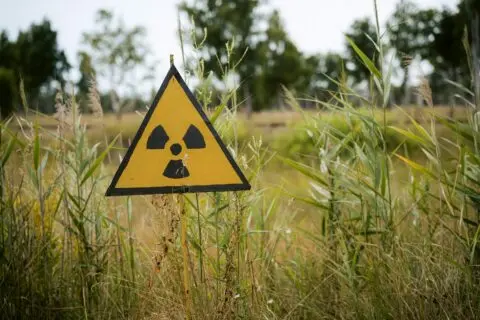
Why in News?
The Union Ministry of Environment, Forest and Climate Change (MoEFCC) has notified the Environment Protection (Management of Contaminated Sites) Rules, 2025 under the Environment (Protection) Act, 1986. This is India’s first dedicated legal framework to systematically identify, classify, and remediate contaminated sites, marking a major step in environmental governance and pollution control.
Objective of the New Rules
- To identify, assess, and manage contaminated sites caused by hazardous waste and toxic pollution.
- To ensure environmental restoration, protect public health, and enforce the “Polluter Pays Principle”.
Nodal Agency
- Ministry of Environment, Forest and Climate Change (MoEFCC)
- Central Pollution Control Board (CPCB) will handle data transparency, digital tracking, and regulatory coordination.
Key Features of the 2025 Guidelines
1. Site Classification
Contaminated areas will be classified into three categories:
- Suspected Sites
- Potentially Contaminated Sites
- Confirmed Contaminated Sites
(Determined through scientific assessment, sampling, and risk analysis.)
2. Exclusions
These Rules do not apply to:
- Radioactive waste sites (regulated by Atomic Energy Act)
- Mining-related contamination
- Marine oil spills
- Municipal solid waste sites (regulated under SWM Rules, 2016)
3. Transparency and Public Participation
- A real-time online portal (managed by CPCB) will display site data.
- A 60-day public comment window will follow the publication of suspected sites.
- Final site lists will be published in regional newspapers.
4. Polluter Pays Principle
- Identified polluters are financially liable for the full cost of remediation.
- They must repay costs within 3 months of site identification.
- Land use and property transfer on contaminated sites are restricted until clearance.
5. Orphan Sites
For sites where no polluter can be identified:
- Clean-up will be funded through:
- Environment Relief Fund
- Penalties from other environmental violations
- Budgetary support from governments
6. Voluntary Remediation
- Private players with technical capacity can undertake voluntary site remediation with landowner consent.
7. Oversight Mechanism
- State and Central Monitoring Committees to oversee implementation.
- They must submit annual compliance reports to MoEFCC.
8. Funding Pattern for Hilly & NE States
- Special financial support will be provided to Himalayan and Northeastern states, recognizing their environmental fragility and limited capacity.
Significance of the Guidelines
| Aspect | Relevance |
|---|---|
| Environmental Restoration | Helps reclaim degraded land and ecosystems. |
| Public Health Protection | Reduces exposure to toxic substances. |
| Legal & Regulatory Clarity | Establishes clear procedures and accountability. |
| Community Participation | Empowers stakeholders and enhances transparency. |
| Prevention of Industrial Abandonment | Deters future polluters via liability clauses. |
Exam Connect – Possible Questions
Prelims
- Which of the following categories of sites are covered under the Environment Protection (Management of Contaminated Sites) Rules, 2025?
- Suspected Sites
- Marine oil spill sites
- Confirmed Contaminated Sites
- Radioactive Waste Sites
Select the correct option:
A. 1 and 3 only
B. 1, 2 and 3 only
C. 2, 3 and 4 only
D. All of the above
Answer: A. 1 and 3 only
- Consider the following statements about the 2025 Contaminated Sites Rules:
- The Central Pollution Control Board will maintain a real-time public data portal.
- The rules apply to radioactive waste and municipal solid waste sites.
- The polluter must bear the full cost of remediation.
- Orphan sites will be ignored due to the lack of identifiable polluters.
Which of the above statements are correct?
A. 1 and 3 only
B. 1, 2 and 4 only
C. 2 and 4 only
D. All of the above
Answer: A. 1 and 3 only
Mains
- Discuss the significance of the Environment Protection (Management of Contaminated Sites) Rules, 2025, in improving environmental governance in India. How do these rules ensure accountability and promote sustainable development? (250 words)
- “The Polluter Pays Principle is central to environmental justice.” Examine the application of this principle in the context of India’s contaminated site management framework. (250 words)
3. Debrigarh Wildlife Sanctuary: Introduction of Tigers – Environment
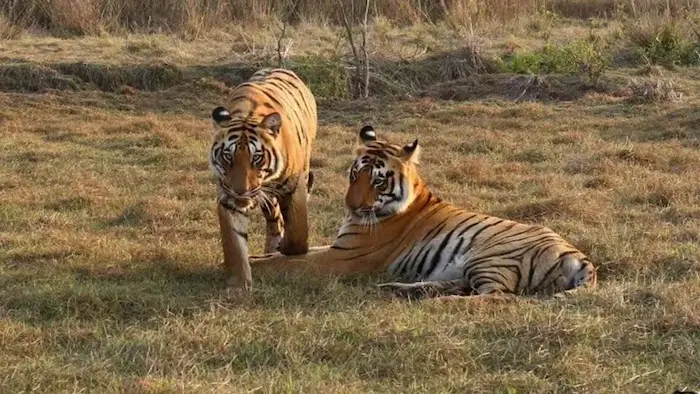
Why in News?
The Odisha government has announced a plan to introduce tigers into the Debrigarh Wildlife Sanctuary (Bargarh district), aiming to enhance biodiversity and restore the ecological balance in the region. The move has received attention from wildlife experts, ecologists, and conservationists across the country.
About Debrigarh Wildlife Sanctuary
| Feature | Details |
|---|---|
| Established | 1985 |
| Location | Bargarh district, Odisha |
| Area Covered | ~347 sq. km |
| Proximity | Near Hirakud Dam and Mahanadi River |
| Historical Relevance | Associated with Veer Surendra Sai, freedom fighter who used the region as a base for guerrilla warfare against the British |
Ecological Profile of Debrigarh
Vegetation
- Dominated by mixed and dry deciduous forests
- Supports high biodiversity due to a mix of terrestrial and aquatic ecosystems (thanks to the proximity to Hirakud reservoir)
Key Flora
- Sal (Shorea robusta)
- Asana (Terminalia alata)
- Bija (Pterocarpus marsupium)
- Aanla (Phyllanthus emblica)
- Dhaura (Anogeissus latifolia)
Key Fauna
- Mammals:
- Indian leopard
- Sloth bear
- Chousingha (Four-horned antelope)
- Sambar deer
- Gaur (Indian bison)
- Wild boar
- Dhole (Indian wild dog)
- Birds (especially during winters):
- Crested serpent eagle
- Flowerpeckers
- Red-vented bulbul
- Tree pie
- Drongo
- White-eyed oriental birds
Tiger Introduction Initiative: Significance and Objectives
| Aspect | Details |
|---|---|
| Biodiversity Enhancement | Tigers, being apex predators, help regulate prey populations, which maintains ecological stability |
| Ecotourism Potential | Likely to boost wildlife tourism in western Odisha, creating livelihood opportunities for local communities |
| Conservation Model | Follows the model of reintroduction-based wildlife recovery seen in places like Panna and Sariska |
| Habitat Suitability | Prey base and forest cover are sufficient to support a small population of tigers, based on preliminary assessments |
Broader Context of Tiger Conservation in India
- India is home to ~75% of the global tiger population.
- Flagship projects like Project Tiger (1973) and All India Tiger Estimation support tiger recovery.
- The National Tiger Conservation Authority (NTCA) monitors and assists tiger reintroduction and corridor development.
Challenges & Considerations
- Ensuring adequate prey base and territorial space to avoid human-wildlife conflict.
- Preventing poaching, especially in newly introduced zones.
- Monitoring via radio-collaring and camera traps.
- Long-term community sensitization and involvement to ensure local support.
Exam Connect – Possible Questions
Prelims
- Consider the following statements about Debrigarh Wildlife Sanctuary:
- It is located in Odisha near the Hirakud Dam.
- The forest is dominated by moist evergreen vegetation.
- The sanctuary is home to the four-horned antelope and Indian wild dog.
Which of the above statements are correct?
A. 1 and 3 only
B. 1 and 2 only
C. 2 and 3 only
D. All of the above
Answer: A. 1 and 3 only
- Which of the following rivers is associated with the Debrigarh Wildlife Sanctuary?
A. Mahanadi
B. Godavari
C. Subarnarekha
D. Brahmani
Answer: A. Mahanadi
Mains
- “The introduction of apex predators like tigers plays a pivotal role in restoring ecological balance.” In the context of India’s tiger reintroduction efforts, critically analyze the ecological and socio-economic implications. (250 words)
- Debrigarh Wildlife Sanctuary represents a blend of historical, ecological, and cultural significance. Discuss the importance of tiger reintroduction in such sanctuaries and the challenges involved in ensuring its success. (250 words)
4.India’s First Grassland Bird Census Conducted in Kaziranga National Park – Environment
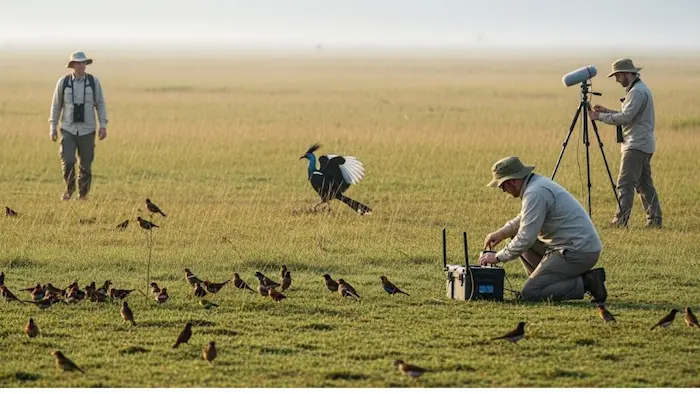
Why in News?
The Prime Minister of India recently highlighted the importance of India’s first-ever dedicated grassland bird census, conducted in Kaziranga National Park, Assam. This initiative marks a major step in grassland biodiversity conservation and the use of technology in wildlife monitoring.
About the Initiative
| Aspect | Details |
|---|---|
| Location | Kaziranga National Park, Assam (Brahmaputra floodplains) |
| Led by | Chiranjib Bora, PhD scholar |
| Supported by | INSPIRE Fellowship, Department of Science & Technology |
| Partners | Kaziranga National Park Authority, wildlife scientists, and conservationists |
| Duration | 3 days (during peak breeding season) |
Objectives of the Census
- To document rare, endemic, and threatened grassland bird species.
- To generate baseline data for long-term monitoring of grassland habitats.
- To understand habitat preferences and breeding behaviors, particularly of priority species in the Brahmaputra floodplains.
Methodology Used
1. Passive Acoustic Monitoring (PAM)
- How it works: Sound-recording devices are placed in tall trees to passively capture bird calls.
- Benefits:
- Effective for cryptic and camouflaged species
- Minimizes disturbance to habitats
- Captures 24/7 activity, including nocturnal calls
2. Sound Identification Tools
- BirdNet: An AI/ML-based tool used to automatically identify bird calls using a trained sound database.
- Spectrograms: Visual representation of sound waves; used for expert verification by ornithologists.
Key Findings from the Census
- Total Species Recorded: 43 species of grassland birds.
- Notable Priority Species:
- Bengal Florican (Critically Endangered)
- Swamp Francolin
- Finn’s Weaver
- Jerdon’s Babbler
- Black-breasted Parrotbill
- Major Discovery:
- First documented breeding colony of Finn’s Weaver with over 85 active nests, a significant breakthrough for ornithology and conservation.
Significance of the Initiative
| Conservation Impacts | Technological Relevance |
|---|---|
| First focused study of grassland avifauna in India | Integration of AI (BirdNet) and acoustic science |
| Helps prioritize conservation efforts for endangered birds | Promotes non-invasive wildlife survey methods |
| Highlights the ecological role of grasslands in floodplains | Supports evidence-based policymaking in biodiversity management |
| Promotes local and global awareness of lesser-known species | Encourages use of machine learning in field ecology |
About Kaziranga National Park
- UNESCO World Heritage Site
- Located in Assam on the floodplains of the Brahmaputra River
- Famous for:
- Greater one-horned rhinoceros
- Tiger Reserve
- Rich wetlands and grassland ecosystems
Exam Connect – Possible Questions
Prelims
- Which of the following statements about India’s first grassland bird census is/are correct?
- It was conducted in Jim Corbett National Park.
- Passive Acoustic Monitoring (PAM) was used for data collection.
- Finn’s Weaver breeding colony was recorded for the first time.
- The census was supported by the Department of Space.
Choose the correct option:
A. 1 and 2 only
B. 2 and 3 only
C. 1, 3 and 4 only
D. 2, 3 and 4 only
Answer: B. 2 and 3 only
- Which of the following is a machine-learning tool used for identifying bird calls in the Kaziranga grassland bird census?
A. eBird
B. BioSound
C. BirdNet
D. SpectroCall
Answer: C. BirdNet
Mains
- “Acoustic monitoring and AI-based tools are transforming the landscape of wildlife conservation.” Discuss this statement in the context of India’s grassland bird census conducted in Kaziranga. (250 words)
- “India’s grasslands are biodiversity hotspots, but often neglected in conservation policies.” In light of the recent bird census in Kaziranga, analyze the ecological and policy-level challenges faced in conserving grassland ecosystems. (250 words)
5. Dorjilung Hydropower Project: Boost to India-Bhutan Energy Cooperation – Economy
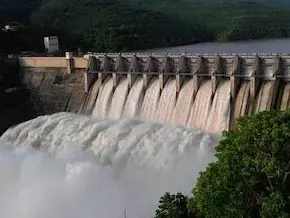
Why in News?
The initiation of infrastructure work on the Dorjilung Hydropower Project in Bhutan marks a major milestone in cross-border renewable energy cooperation and the increasing involvement of India’s private sector in international hydropower ventures.
Key Features of the Dorjilung Hydropower Project
| Parameter | Details |
|---|---|
| Location | Lhuentse and Mongar districts, Eastern Bhutan |
| River | Kurichhu River |
| Capacity | 1125 MW |
| Design Type | Run-of-River with a concrete gravity dam |
| Estimated Cost | Approx. $1.7 billion |
| Project Structure | Public-Private Partnership (PPP) |
| Expected Commissioning | Early 2032 |
| Financing Support | World Bank |
| Annual Energy Generation | Around 4.5 TWh (Terawatt-hours) |
Technical Specifications
- Water flow: 287 m³/s
- Infrastructure:
- 15 km long headrace tunnel
- Underground powerhouse with six Francis turbines
Stakeholder Structure (PPP Model)
| Entity | Share |
|---|---|
| Druk Green Power Corporation (DGPC) – Bhutan | 60% |
| Tata Power (India) | 40% |
Significance of the Project
For Bhutan
- Boosts economic revenue from clean energy exports
- Reduces dependence on foreign energy aid
- Promotes energy security and self-reliance
For India
- Secures access to clean, affordable, and renewable energy
- Strengthens strategic and energy ties with a key neighbour
- Promotes private-sector-led energy diplomacy
- Supports India’s Act East Policy and Neighbourhood First Policy
For the Region
- Encourages sustainable cross-border infrastructure development
- Sets a precedent for multilateral financing of regional energy initiatives
- Enhances grid integration and clean energy trade in South Asia
Environmental Advantage
- Run-of-river design minimizes displacement and flooding
- Generates low-carbon, renewable electricity to offset fossil fuel dependency
- Supports climate change mitigation efforts by both India and Bhutan
Context: India-Bhutan Energy Relations
- India is Bhutan’s largest trading partner and energy buyer.
- Previous hydropower collaborations:
- Tala Hydropower Project
- Chukha
- Kurichhu
- Mangdechhu
- These projects have contributed over 1,600 MW of hydropower generation.
- Bhutan exports around 70% of its hydropower to India.
Exam Connect – Possible Questions
Prelims
- Consider the following statements about the Dorjilung Hydropower Project:
- It is based on a storage-type dam design.
- The project is located in western Bhutan.
- Tata Power holds a minority stake in the project.
- It is being funded by the World Bank.
Which of the above statements are correct?
A. 1 and 3 only
B. 3 and 4 only
C. 2, 3 and 4 only
D. 1, 2 and 4 only
Answer: B. 3 and 4 only
- The Kurichhu River, associated with the Dorjilung Hydropower Project, is a tributary of which major river system?
A. Ganges
B. Brahmaputra
C. Indus
D. Teesta
Answer: B. Brahmaputra
Mains
- “The Dorjilung Hydropower Project exemplifies the shift from government-to-government to public-private partnerships in India’s external energy engagements.” Discuss the strategic, economic, and environmental implications of this development. (250 words)
- Discuss the role of cross-border hydropower projects in strengthening regional energy security and diplomatic ties, with reference to India-Bhutan cooperation. (250 words)
6. Skill Impact Bond: Innovative Model for Outcome-Based Employment – Economy
Why in News?
The Skill Impact Bond (SIB) has been recognized by the Minister of State for Skill Development and Entrepreneurship for its measurable social impact in improving employment outcomes for Indian youth, particularly women. This makes it a landmark model in results-driven financing in India’s skill ecosystem.
What is a Skill Impact Bond (SIB)?
The Skill Impact Bond is India’s first development impact bond (DIB) exclusively focused on employability and job placement, launched in November 2021.
It is a form of outcomes-based financing where private investors fund skill development programs upfront, and repayment occurs only if agreed outcomes (like job placement and retention) are achieved.
Key Features
| Aspect | Details |
|---|---|
| Launched | November 2021 |
| Target Beneficiaries | 50,000 young Indians (with at least 60% women) |
| Goal | Improve employment outcomes, not just skill training |
| Focus Areas | Skills training, job placement, and retention |
| Sector Focus | Sectors with high growth potential like retail, logistics, healthcare, and apparel |
How the Skill Impact Bond Works
| Stakeholder | Role |
|---|---|
| Risk Investors | Provide upfront funding to service providers (usually private sector entities) |
| Service Providers | Deliver training and job placement services |
| Outcome Funders | Repay investors based on performance (employment-related outcomes met) |
| Independent Evaluator | Verifies whether employment and retention benchmarks are achieved |
Payment is made only if results are verified — no outcome, no repayment.
Key Benefits
| Social & Economic Impact | Innovative Financial Impact |
|---|---|
| Promotes women’s employment | Attracts private capital into skill development |
| Links training to real job outcomes | Ensures accountability and transparency |
| Encourages long-term employment | Reduces risk for public funders and donors |
| Aligns incentives among stakeholders | Replicable for other sectors and regions |
Global Context
- The Development Impact Bond (DIB) model has been used in countries like the UK and Kenya for education, health, and employment.
- The SIB is India’s adaptation tailored to skill development and economic inclusion.
Significance for India
- Addresses the skill-job mismatch in India’s labour market.
- Supports the Skill India Mission and National Skill Development Policy.
- Enhances public-private collaboration for social impact.
- Promotes gender equity in workforce participation.
- Aligns with SDG 8: Decent Work and Economic Growth.
Exam Connect – Possible Questions
Prelims
- Which of the following correctly describes the Skill Impact Bond (SIB)?
- It is India’s first outcomes-based financing model focused on employment.
- It requires repayment even if job placement targets are not achieved.
- It focuses exclusively on providing online skill certifications.
- It was launched in collaboration with private investors and outcome funders.
Choose the correct option:
A. 1 and 4 only
B. 1 and 3 only
C. 2 and 3 only
D. 1, 2 and 4 only
Answer: A. 1 and 4 only
- In the context of a Skill Impact Bond, who among the following verifies whether the outcomes have been achieved?
A. Ministry of Labour and Employment
B. National Skill Development Corporation
C. Private Skill Training Partner
D. Independent Third-Party Evaluator
Answer: D. Independent Third-Party Evaluator
Mains
- “The Skill Impact Bond represents a shift from input-based to outcome-based approaches in India’s skill development strategy.” Discuss its potential in addressing unemployment and improving workforce participation among youth and women. (250 words)
- Examine how innovative financing mechanisms like Skill Impact Bonds can help bridge India’s skill gap and promote inclusive economic growth. (250 words)

